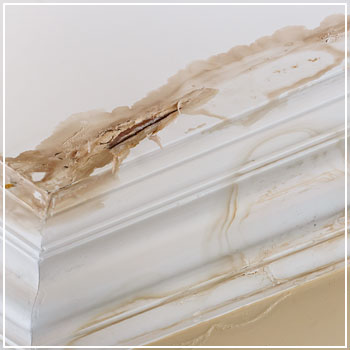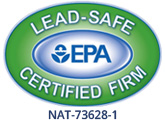How Much Damage Can a Burst Pipe Cause?
 A common occurrence in winter, pipes in your home could get clogged, freeze and burst open. Although slow, undetectable leaks are a possibility, burst pipes frequently result in gallons of water suddenly flooding into your home.
A common occurrence in winter, pipes in your home could get clogged, freeze and burst open. Although slow, undetectable leaks are a possibility, burst pipes frequently result in gallons of water suddenly flooding into your home.
From here, the water seeps into the materials that make up your walls, ceilings and floors, which can result in mold growth, electrical issues and structural damage that require costly renovations.
Damage to Flooring
Your floors and belongings sitting directly on them are typically the first casualty, especially if the pipe is situated below a sink. In the short term, the burst pipe creates several inches of water on your floors.
Over time, the carpeting, wood, linoleum or cement slab flooring absorbs some of the water until not long after, they develop an odor of mildew or start to show signs of mold, rot or cracking.
If the pipe burst in your living room or basement and the water released was high enough, your furniture and other belongings will likely need to be replaced. Additionally, high waters may cause electrical outlets to short and could even seep into the drywall.
Damage to Walls
Water damage to your walls is similar to the floors, yet the extent of damage often goes unseen, especially in areas like the attic. Drywall and wood damage tend to be more extensive, as the water may seep through the entire length of the wall. Depending on the pipe’s location, the damage may also affect any plaster or stucco. At this point, letting things dry out is not an option:
- Your home is at risk for a mold problem that could aggravate allergies and asthma, especially if drywall or plaster absorbs the moisture.
- The electrical system’s wiring is exposed to the water, resulting in short circuits, potential fires and damaged appliances or electronics.
- If any wooden structural components are exposed to water over a prolonged period, they may start to rot, creating a serious structural issue that may involve gutting the walls to replace the damaged parts.
- Insulation may absorb the water. If your home uses cellulose, loose fill or fiberglass, its effectiveness is greatly diminished.
- Although wood’s porousness means it quickly absorbs the water, a slow drip may rust any steel supports in your walls, eventually requiring replacement.
Mold Formation
Moisture that never quite dries out or evaporates is all that’s needed for mold growth. Unfortunately, while you might remove soaked furniture, rugs and rotted, damp wood and drywall, mold can still persist in unseen places like the ducts, inside walls, below sinks and in basements.
Especially if mold spores are living in your home’s HVAC system, turning on the air conditioner or heater circulates them throughout the home, potentially resulting in an allergic reaction or asthma attack.
One key sign of mold growth is a musty smell that never quite goes away. Although DIY mold removal remedies exist, professional help becomes essential once mold is living in your walls and air ducts, especially to restore your home’s air quality.
Ignoring a burst pipe might translate to thousands of dollars in damage. Whether you’re concerned about your plumbing or think your HVAC system is spreading mold, have the professionals at MJ Fahy & Sons perform a check. To schedule an appointment, contact us today.




